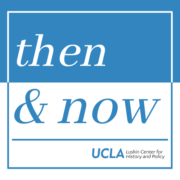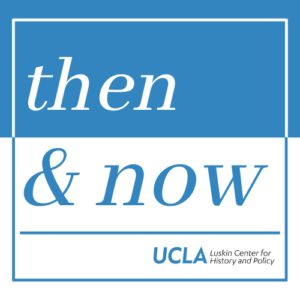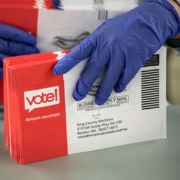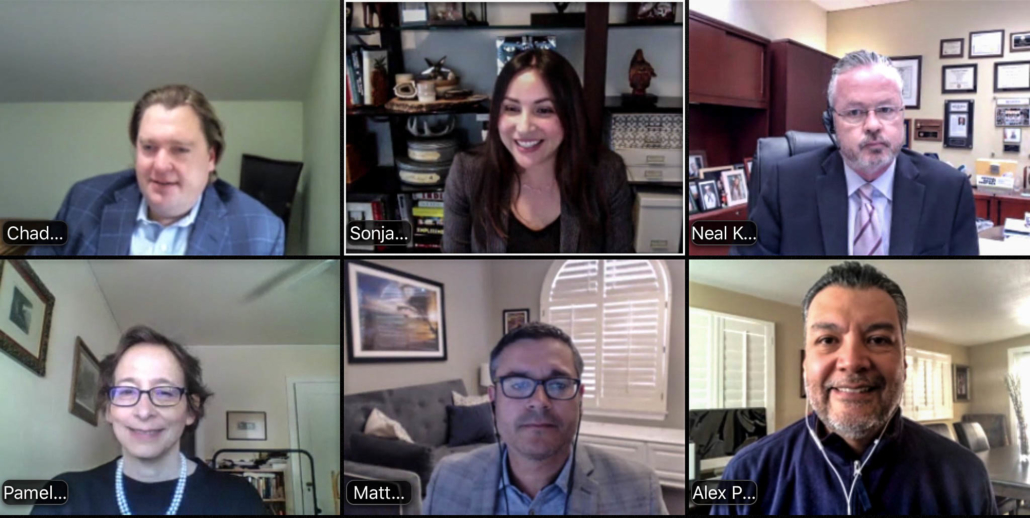
Top row (left to right): Chad Dunn, Sonja Diaz, Registrar Neal Kelley
Bottom row (left to right): Professor Pamela Karlan, Dr. Matt Barreto, Secretary Alex Padilla
By Eliza Moreno, Communications Manager, Latino Policy & Politics Initiative
On April 2nd, the UCLA Latino Policy and Politics Initiative (LPPI) and its marquee advocacy project, the UCLA Voting Rights Project, hosted a webinar that focused on the importance of vote-by-mail programs in upcoming primaries and the November general election amid the coronavirus pandemic. The webinar brought together the following voting rights experts: California Secretary of State Alex Padilla; Orange County Registrar of Voters Neal Kelley; Stanford Law School Professor Pamela Karlan; Chad Dunn, director of litigation at the Voting Rights Project; Matt Barreto, LPPI and Voting Rights Project co-founder; and Sonja Diaz, LPPI’s founding executive director. The webinar provided a space for leading voting rights experts to discuss the importance of protecting our democracy during this pandemic, the need to ensure communities of color are able to cast a meaningful ballot, and how other state government officials should try to transition to vote-by-mail.
The webinar discussed the importance of protecting our democracy by immediately implementing a nationwide vote-by mail system that enables full participation in the voting process, most especially during this health crisis. Professor Karlan stated, “This is not the first time Americans have voted during a crisis.” Professor Karlan referenced the Civil War as an example where a change in voting practices took place due to hardship. During the Civil War, various states changed their laws in order to allow Civil War soldiers to vote by absentee ballot. California Secretary of State Alex Padilla emphasized how although “we are living in unprecedented times as it pertains to public health and public health risks,” this nation has witnessed the resiliency of our democracy. In both times of peace and war, including prior flu pandemics, people have voted. It is critical that during these times all jurisdictions make vote-by-mail available in order to take the burden off of in-person voting.
There are various states with vote-by-mail accessible, such as Colorado, Oregon, Washington, and California, however, in other states vote-by-mail is nonexistent. Secretary Padilla said that although it may prove difficult, it is possible that all states adopt vote-by-mail, but “first comes the willingness, the vision, and leadership that is central in a pandemic.” It remains critical that we do not wait until October to take action. The time is now. Orange County Registrar of Voters, Neal Kelley, oversaw the transition to sending every registered voter a vote-by-mail ballot. Beginning in 2020, every voter in Orange County, regardless of how they registered, received a vote-by-mail ballot. A few years ago, under Secretary Padilla’s leadership, Orange County ended up with a bill that became law that mailed every voter a ballot, provided eleven days of in-person voting in any location in the county, and equipped voters with the capability to return their ballot in a variety of ways. Registrar Kelley shares that the percentage of vote-by-mail usage in Orange County’s jurisdiction was 60% when the transition first began, however, the usage rose to 82% in March’s primary, the highest in Orange County since 2000. Registrar Kelley assures others that “voters will adapt and are looking for opportunity for expanded access.”
Attendees of the webinar were concerned that lower-economic communities and communities of color would have a lower propensity in practicing their right to vote and utilizing vote-by-mail. Secretary Padilla clarified that the in-person option will be maintained for those who need assistance, however, vote-by-mail must still be made available for all. Outreach to communities of color are fundamental in encouraging them to practice their right to vote. Dr. Matt Barreto discusses how the Latino and Asian American community have record numbers of first time voters, therefore “let’s celebrate and engage them” on their right to vote and inform them on the methods of voting. Registrar Kelley believes in the importance of targeting messages to each community and addressing the issues that matter most to them. Additionally, voting materials must be made available in different languages, as required by the Voting Rights Act, however public education and voter education campaigns and materials remain vital to ensure that all voters are encouraged to practice their right to vote. Secretary Padilla emphasizes how “voting by mail is smart from a voting rights standpoint, public health standpoint, but it’s only as effective as we educate the public.”
As for the distrust of vote-by-mail and in response to cyber security and threats: you can‘t hack a paper ballot. There are methods in place to ensure the validating of a mail-in ballot, such as signature verification and matching. However, scholarship referenced in the Voting Rights Project report discusses how there is a higher percentage of ballots rejected by Latino and African American voters, therefore there is work to be done to prevent voter disenfranchisement, such as detailed and proper training for the operators who look at the ballots. Professor Karlan believes it is possible to instill a confidence that votes will be counted and counted fairly, it is a “technical problem that can be solved.”
When thinking of the upcoming November election, “it is not a matter of if, or a matter of when, the question is how do we provide the opportunity for people to vote because we must and we will,” as Secretary Padilla said. In order to protect our democracy amidst the pandemic, it is critical that there is a move towards universal vote-by-mail, while ensuring that all can practice their right to vote in a safe and healthy manner. Matt Barreto reminds us that “we have an opportunity to protect [our democracy] during this pandemic, but this is something that all states should be doing to encourage voter participation and engagement.” As of March 23, the UCLA Voting Rights Project had released one report, “Protecting Democracy: Implementing Equal and Safe Access to the Ballot Box During a Global Pandemic,” and two memos, “Improving the March 23, 2020 House Bill on Expanded Vote-by-Mail” and “Voting and Infection Prevention of COVID-19.” The publications raise an early call to action and address the safe and equitable implementation of a vote-by-mail program to encourage voter participation. As Chad Dunn, director of litigation at the Voting Rights Project, said at the close of the webinar, “It’s on all of us to double our commitment to democracy and find a way to make this work in all 50 states and territories.”
Subscribe to LA Social Science and be the first to learn more insight and knowledge from UCLA social science experts in upcoming video/audio sessions and posts dealing with the COVID-19 pandemic.

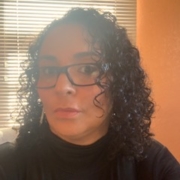
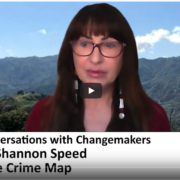


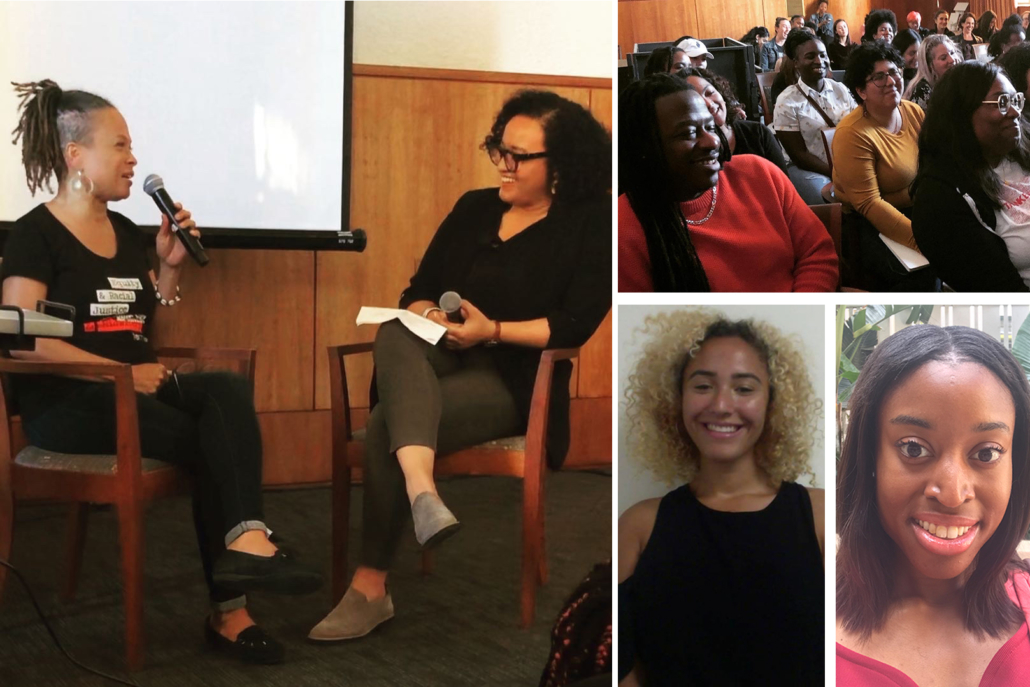
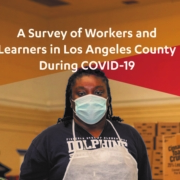


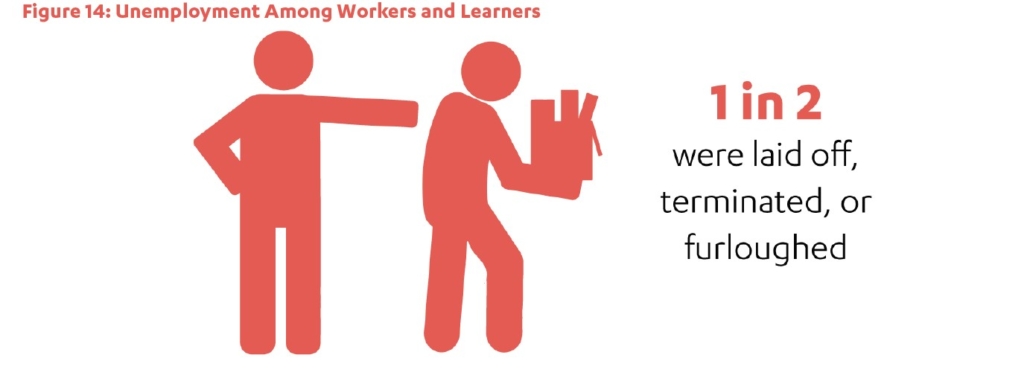
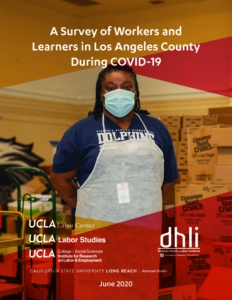
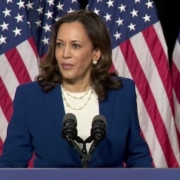
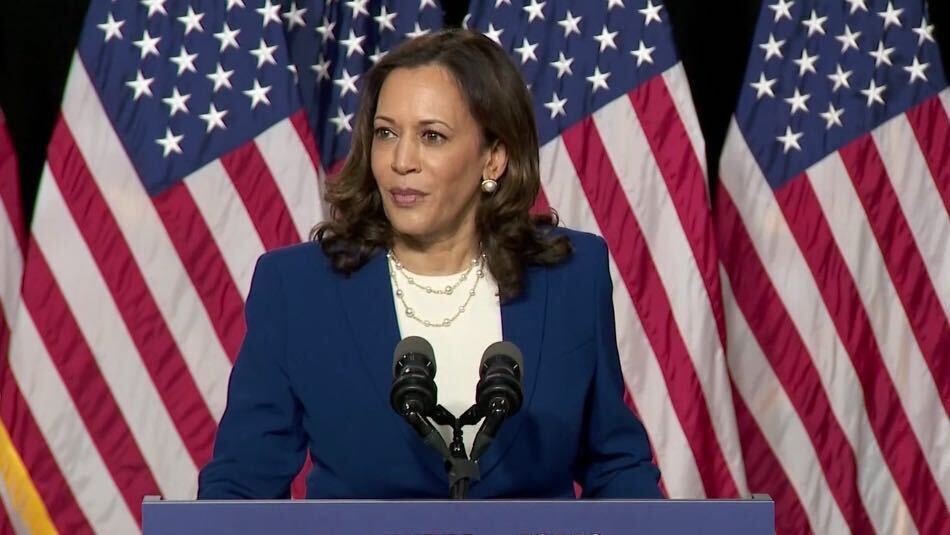
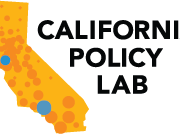
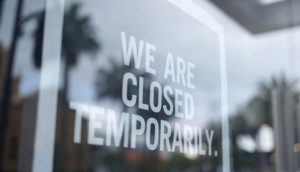
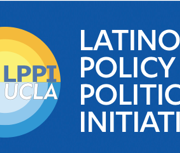
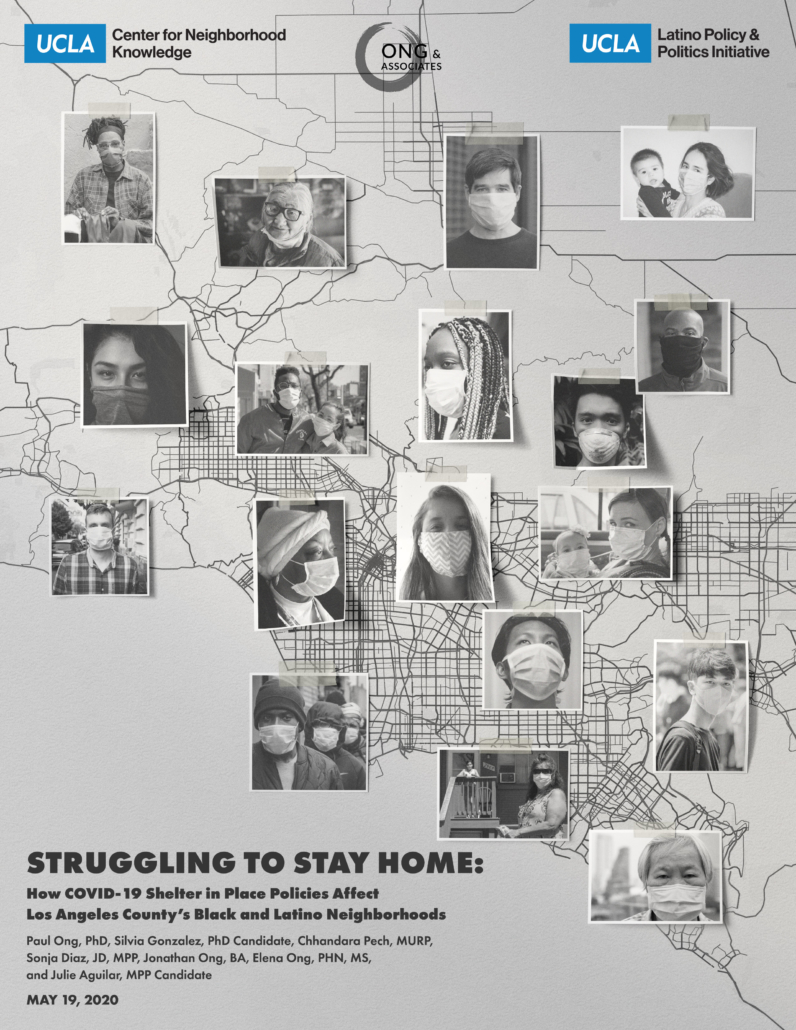
 UCLA’s
UCLA’s 